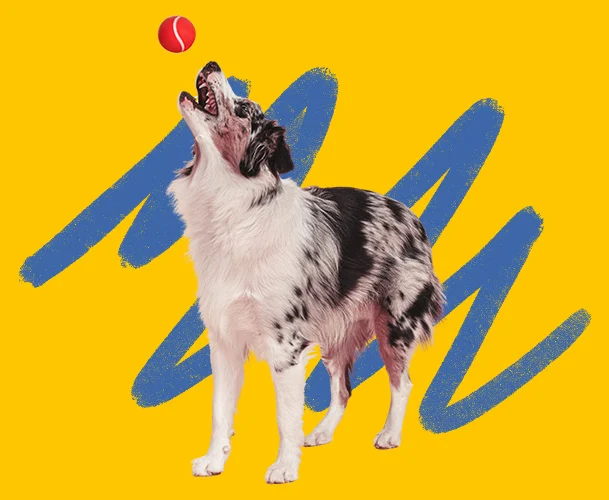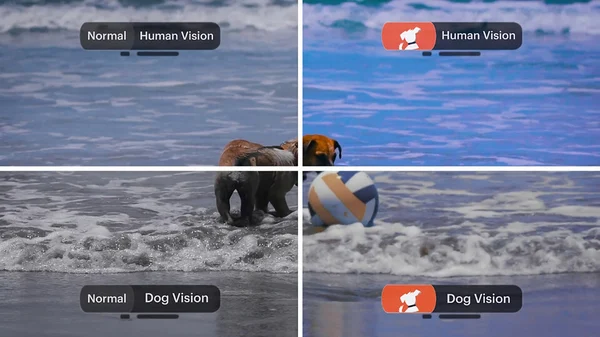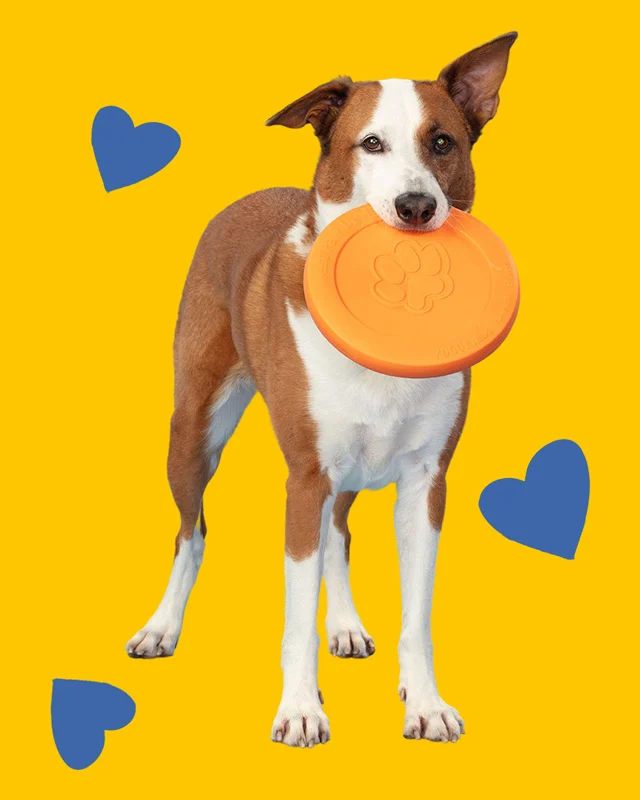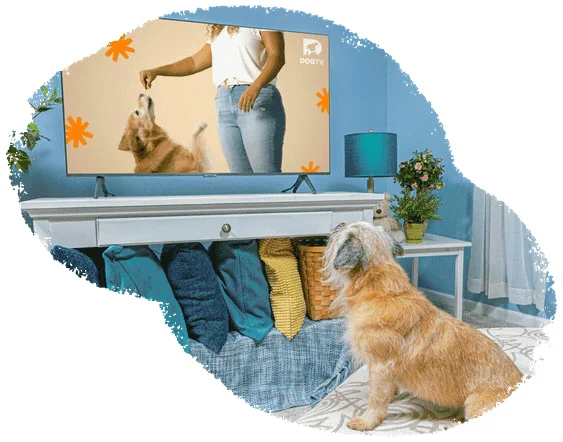


We reviewed over 50 different research studies from universities to learn about how dogs experience television. We asked questions like, what do dogs enjoy watching? What can they see on-screen? What kinds of sounds do dogs recognize, and what kinds of music will calm an anxious dog? We learned that dogs have short attention spans, and while they don’t see in black and white, dogs do have dichromatic vision so they don’t see the full spectrum of colors that humans do. We learned that their eyes are super sensitive to motion, and that certain sound frequencies are more soothing to dogs.
With that in mind, we created our own manual on how to produce TV shows for dogs. We worked with leading pet experts to create our exclusive patented video content designed to ease separation anxiety and provide mental stimulation for dogs at home during the day. Each episode is 3-5 minutes long, color adjusted to be eye-catching for a canine audience, and paired with a soundtrack composed for dogs.


Yes, they do! (And we have quite a few feline fans as well.) Dogs won’t binge watch the way humans might, but many do enjoy television. In a survey conducted by the AKC and IAMS, nearly half of those surveyed had dogs that showed interest in TV. In our mission to create content to help reduce anxiety in dogs, we thought about that other half too. We studied the particular sound frequencies that dogs respond to and created our soundtrack to soothe and calm them – so your dog is benefitting even if their eyes aren’t on the screen.
We continually conduct additional research to learn more about how DOGTV can benefit dogs. We’ve worked with experts like Professor Nicholas Dodman at Tufts University, Niwako Ogata of Purdue University, and organizations like The Center for Canine Behavior Studies to learn from their observations. Their findings validate what we knew all along – thoughtfully produced tv programming can reduce anxiety in dogs, and can be a valuable form of enrichment for our furry friends.